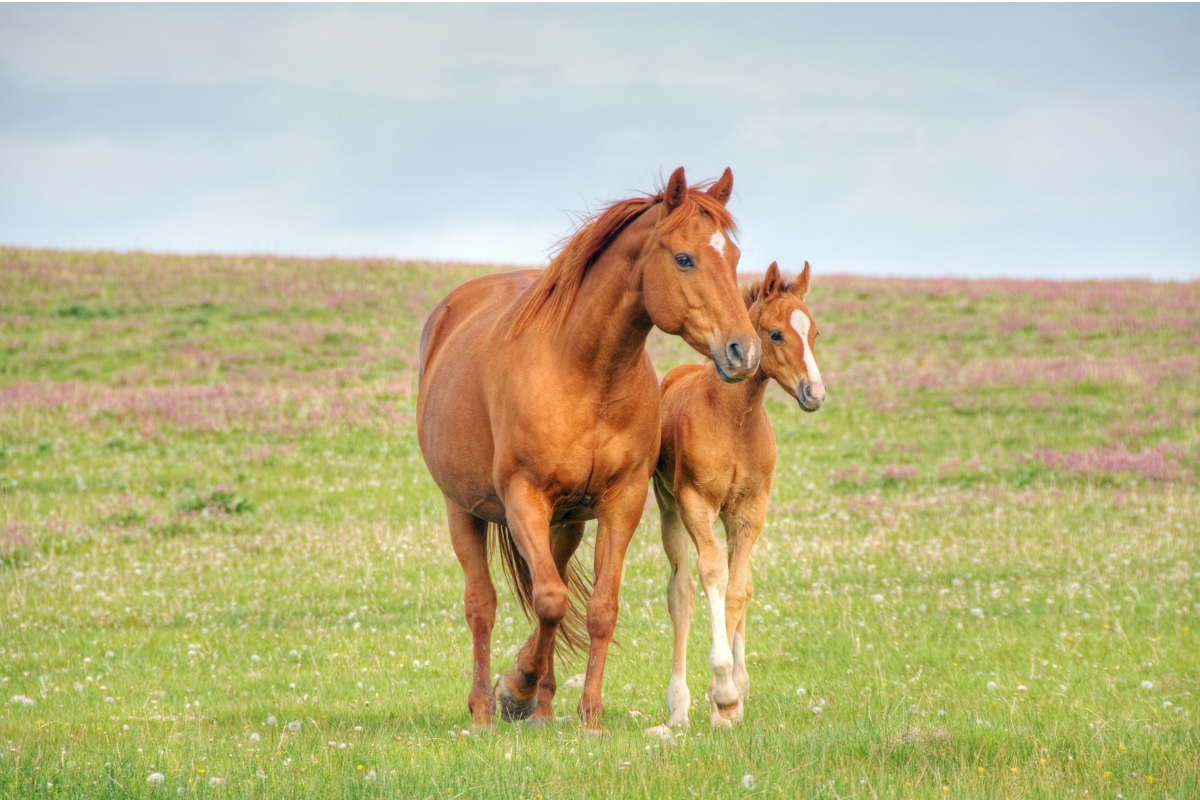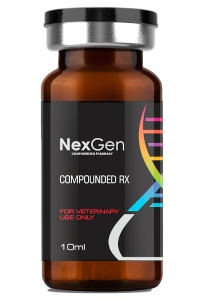What Is The Estrous Cycle?

In general, the estrous cycle (or oestrus cycle) is the group of physiological changes that occur in sexually mature female mammals which are brought on by reproductive hormones. The changes facilitate fertility and reproduction.
Horses (mares) are seasonally polyestrus. This means that their estrous cycles depend on the season.1 A mare will undergo regular estrus cycles during a portion of the year (usually late Spring, Summer and early Fall) and none at others (Winter). It is believed that this adaptation came about in order to prevent the arrival of foals during the inclement weather of Winter.
Terminology
Common terminology referencing the estrous cycle is as follows:
- Estrous (œstrous in many parts of the world outside North America) refers to the entire cycle
- Estrus (œstrus) refers to the "heat" stage of that cycle when the mare is receptive to the stallion's advances
- Diestrus (diœstrus) refers to the period in between the estrus phases when the mare is not receptive to the stallion
- Anestrus (anœstrus) refers to the complete absence of estrus2
The normal estrous cycle in the mare is 21 to 22 days long, as defined by the intervals between ovulation. The duration of estrus, however can vary, so the most consistent period in the estrous cycle is the length of diestrus.3 This means that estrus itself is differentiated from the estrous cycle in that the former is a component of the latter.
Hormones Involved in the Estrous Cycle
There are several reproductive hormones involved in the equine estrous cycle. These are estrogen (with several forms occurring in the mare), progesterone, prostaglandin, Gonadotropin Releasing Hormone (GnRH), Follicle Stimulating Hormone (FSH)*, Luteinizing Hormone (LH) and Inhibin.
The pituitary gland is located at the base of the brain and produces follicle-stimulating hormone and luteinizing hormone. As Spring approaches, the pituitary gland is stimulated by increased daylight to enhance follicle-stimulating hormone production. Follicle-stimulating hormone is released into the blood stream and travels to the ovaries to initiate development of a follicle containing an ovum. The developing follicle produces estrogens, which are released into the blood stream.
When blood estrogen reaches a certain level, a surge of luteinizing hormone is released from the pituitary gland into the blood stream. Estrogens are responsible for the clinical signs of estrus and act on the oviducts, uterus and cervix to prepare the reproductive tract for pregnancy.
The surge of luteinizing hormone causes the follicle on the ovary to rupture, resulting in ovulation. As the follicle develops on the ovary, the ovum (egg) inside the follicle undergoes a number of changes to become capable of being fertilized by the sperm. The cavity left by the ruptured follicle [after release of the ovum] becomes engorged with blood to form a corpus hemorrhagicum. The corpus hemorrhagicum luteinizes to form the corpus luteum, sometimes called the "yellow body."
As the corpus luteum develops, it starts to produce progesterone, which influences the pituitary gland and reproductive tract. The feedback of progesterone via the blood stream inhibits the release of luteinizing hormone. Under the influence of progesterone, the mare will not show estrus.
If the mare does not conceive, the corpus luteum remains functional for about 12-14 days. At this time, prostaglandin is released from the endometrium (inner lining of the uterus). If the mare conceives, hormonal activities are essentially the same as for the 12-14 days post-ovulation.4
Regulating Mares
 If
a mare must be regulated (manipulated) into coming into heat through short
cycling, it can make planning for breeding easier, but is more labor-intensive
than waiting for a mare to come into heat.
If
a mare must be regulated (manipulated) into coming into heat through short
cycling, it can make planning for breeding easier, but is more labor-intensive
than waiting for a mare to come into heat.
Several medications (hormones) are commonly used for regulating mares, many of which are available in synthetic form. Among these are progesterone, estradiol and oxytocin. Compounds containing combinations of these medications are also available from veterinary compounding pharmacies.
Altrenogest is effective in normally cycling mares for minimizing the necessity for estrus detection, for the synchronization of estrus, and permitting scheduled breeding. Altrenogest is also effective in suppressing estrus expression in show mares or mares to be raced. It is also available in combination with progesterone.
1Cook, J., DVM. Mares and Hormones, The Horse, Nov. 2012.
2Equine-Reproduction.com.
3The Normal Equine Estrous Cycle, lsu.edu.
4Wright, B. DVM. Anatomy, Physiology
and Reproduction in the Mare. OMAFRA Veterinary Science and Policy, Dec.
2010.
*References to Follicle Stimulating Hormone (FSH) denote naturally-occurring FSH, as this hormone is not available legally in the U.S.
About NexGen Pharmaceuticals
NexGen Pharmaceuticals is an industry-leading veterinary compounding pharmacy, offering sterile and non-sterile compounding services Nationwide. Unlike other veterinary compounding pharmacies, NexGen focuses on drugs that are difficult to find or are no longer available due to manufacturer discontinuance or have yet to be offered commercially for veterinary applications, but which still serve a critical need for our customers. We also specialize in wildlife pharmaceuticals, including sedatives and their antagonists, offering many unique options to serve a wide array of zoo animal and wildlife immobilization and anesthesia requirements.
Our pharmacists are also encouraged to develop strong working relationships with our veterinarians in order to better care for veterinary patients. Such relationships foster an ever-increasing knowledge base upon which pharmacists and veterinarians can draw, making both significantly more effective in their professional roles.



